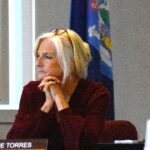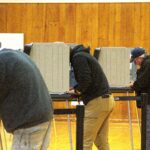When legislators approved a state budget for fiscal year 2017-18 last month, many school districts received some surprisingly pleasant news.
Thanks to changes in the school funding formula and an extra $162 million lawmakers approved for education, many school districts around the state saw their funding for education increase, and in some cases substantially.
Because school districts must build and vote on a budget before the state Legislature has finalized its own budget, school superintendents must rely on estimated amounts from the state.
Some school districts included an extra warrant article at their district budget meeting which stated how they could use any additional money they might receive from the state. However, if a district did not have any such warrant article, the options are limited.
So now that they are receiving extra money, how will those districts use the additional funds?
“This is not the easy question that is seems,” RSU 29 Superintendent Ellen Schneider said. “We received two updated forms since the state budget passed, with differing numbers each time. We are also finding out more and more regarding what is and isn’t being funded going forward.”
RSU 29, which serves four communities in the Houlton area, received an additional $480,000 in state aid, but did not include an extra warrant article at its district budget meeting. Therefore, Schneider said, the board will not be able to utilize those funds in the 2017-18 school year.
“We did not have an extra warrant passed as some districts chose to do which provided the board the ability to make decisions regarding using the money in this year,” she said. “Our budget for FY 17-18 was based on the numbers provided to the districts by the state last spring. Since this additional money was not anticipated within our budget, the additional money will not be used within this budget year.”
Instead, RSU 29 will place the entire $480,000 into its “undesignated fund” balance and use that money next year to help reduce the impact for taxpayers, Schneider said.
Some superintendents, however, do not view the change in funding amounts as “extra” money for their school districts.
SAD 27 Superintendent Benjamin Sirois said while it was nice to see an increase in state aid, the amount still did not cover the loss of state funds from the previous school year. SAD 27 serves six communities in the Fort Kent region.
“When we received our initial ED279, the formula that calculates our school funding, our district was receiving $584,771 less in state aid [than the previous year],” he said. “After the state passed its biannual budget, shortly after July 1, the Department of Education recalculated the ED279 and SAD 27 is receiving $353,136 back from that loss.”
Sirois noted that even with the extra funds, the district is receiving $231,635 less in state subsidy than a year ago.
“The SAD 27 board has determined to use part of the funds for positions and projects for the district and that $162,409 will go back to the communities, which will translate to a zero percent tax increase from last year,” Sirois said.
SAD 70, which serves six communities in the Hodgdon area, received $148,590 more in subsidy than originally anticipated. According to Superintendent Scott Richardson, the district’s finance committee will meet prior to the August board meeting to make recommendations to the board on what to do with the additional funding.
“We do have voter permission for the board to make decisions as to increasing the amount in cost centers or to decrease tax commitments by the individual towns,” Richardson said.
RSU 50, which comprises 12 communities and the schools of Southern Aroostook Community School and Katahdin Middle-High and elementary schools, is receiving an additional $248,000 from the state.
“We had a warrant that prescribed how any additional subsidy would be used and it is exactly what the state prescribes,” explained RSU 50 Superintendent Todd LeRoy. “Our warrant allows the school to utilize 50 percent, while giving 50 percent back to the communities as property tax relief.”
RSU 39, which serves three communities in the Caribou area, received an additional $436,356 from the state. And while district officials have not made a formal decision regarding the fate of the funds, Business Manager Mark Bouchard said the school board will discuss its options during an Aug. 2 meeting in Caribou.
Members of the RSU 39 communities voted on May 31 to allow the school board to use any additional state funds in one of three different ways — use all or part of the additional state subsidy to increase expenditures for school purposes in cost center categories approved by the school board; increase the allocation of finances in a reserve fund; and/or decrease the local cost share expectation.
Bouchard said he expected the board would appropriate some money toward a reserve fund while giving the remainder back to RSU 39 towns.
Easton receives no general purpose aid funding from the state due to its high valuation, according to Superintendent Roger Shaw. However, the district did receive $32,000 more under the “economically disadvantaged student” adjustment.
“The fact that our 2017-2018 budget has been approved, and that about 93 percent of our budget is local funds, the entire additional state money is being returned to the town of Easton to assist the town council and taxpayers of the community,” Shaw said.
Madawaska Superintendent Gisele Dionne said her department is receiving $159,796 in extra general purpose aid. Madawaska is not a district, but a municipal department serving only Madawaska. Grand Isle has its own school district, but tuitions students to Madawaska
“As the school committee and finance committee had discussed during budget season, we will return a portion of this money to decrease the local tax commitment,” Dionne said. “We will also use a portion to fund one of several maintenance projects we have at the elementary school to further limit the financing needed for these projects.”
SAD 33, which serves Frenchville and St. Agatha, received an adjustment of $79,581. Of this amount, $34,865 (43.81 percent) is going back to Frenchville and $44,717 (56.19 percent) is going back to St Agatha, according to Superintendent Lisa Bernier.
For SAD 1, which serves five communities in the Presque Isle area, no decision has been made on how the additional funds will be utilized, according to Superintendent Clint Deschene. He also serves as the superintendent of SAD 45, which comprises three communities in the Washburn. area
“Per the law and the method we (SAD 1 and SAD 45) adopted budgets, the funds can be used or held,” he explained. “However, in order to change, you need a school board meeting. So neither board has met yet.”
Deschene added that “unfortunately coverage of the state budget has been less detailed, so many think this is just a lot more subsidy. It isn’t. There are many contingencies and changes to this budget and next years.”
He stated SAD 1 intended from the beginning of the budget to hold any additional funds to use toward next year’s budget. SAD 45 meets Aug. 8 and will decide at that time how to use the money. Some of the options SAD 45 may consider include holding some of the funds for next year, doing maintenance projects this year, and using a portion to help reduce the mill rate, Deschene said.
SAD 24, which serves three communities in the Van Buren area, will receive about $100,000, according to board chairman John Pelletier. Voters approved a warrant article which allows the board to use the money for any purpose, except paying for “teachers or administration.”
Reporters Christopher Bouchard, Jessica Potilla, Don Eno and Anthony Brino contributed information for this article.








